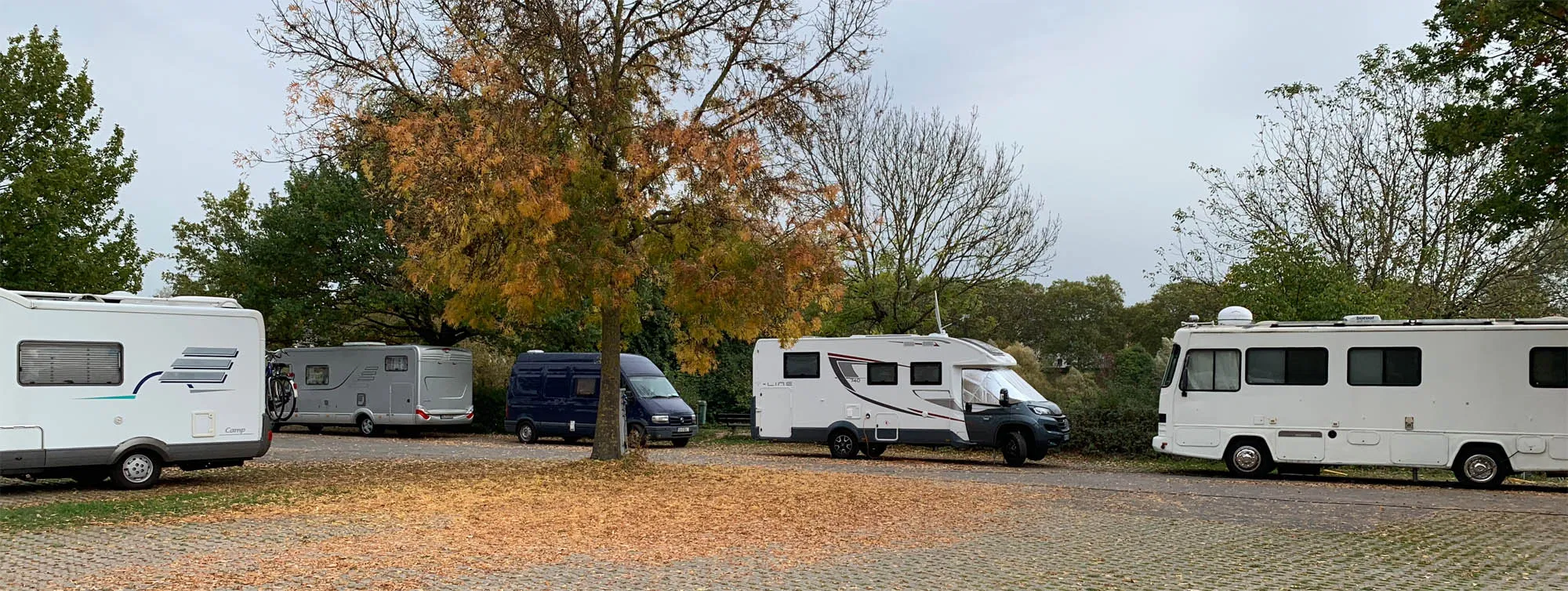Tuesday, 23rd October 2018
Trier lays claim to being the oldest city in Germany having been capital of the Western Roman Empire in the third century. Several of its buildings have been designated as UNESCO World Heritage Sites and it is also the birthplace of Karl Marx.
We left our aire on the banks of the Moselle and made our way into town, past the remains of an ancient synagogue, . . .

. . . .the Kaiserthermen [Roman Imperial Baths – dogs not allowed] and the ornate eighteenth century Rococo Kurfürstliches Palais [Palace of the Electors]. . .
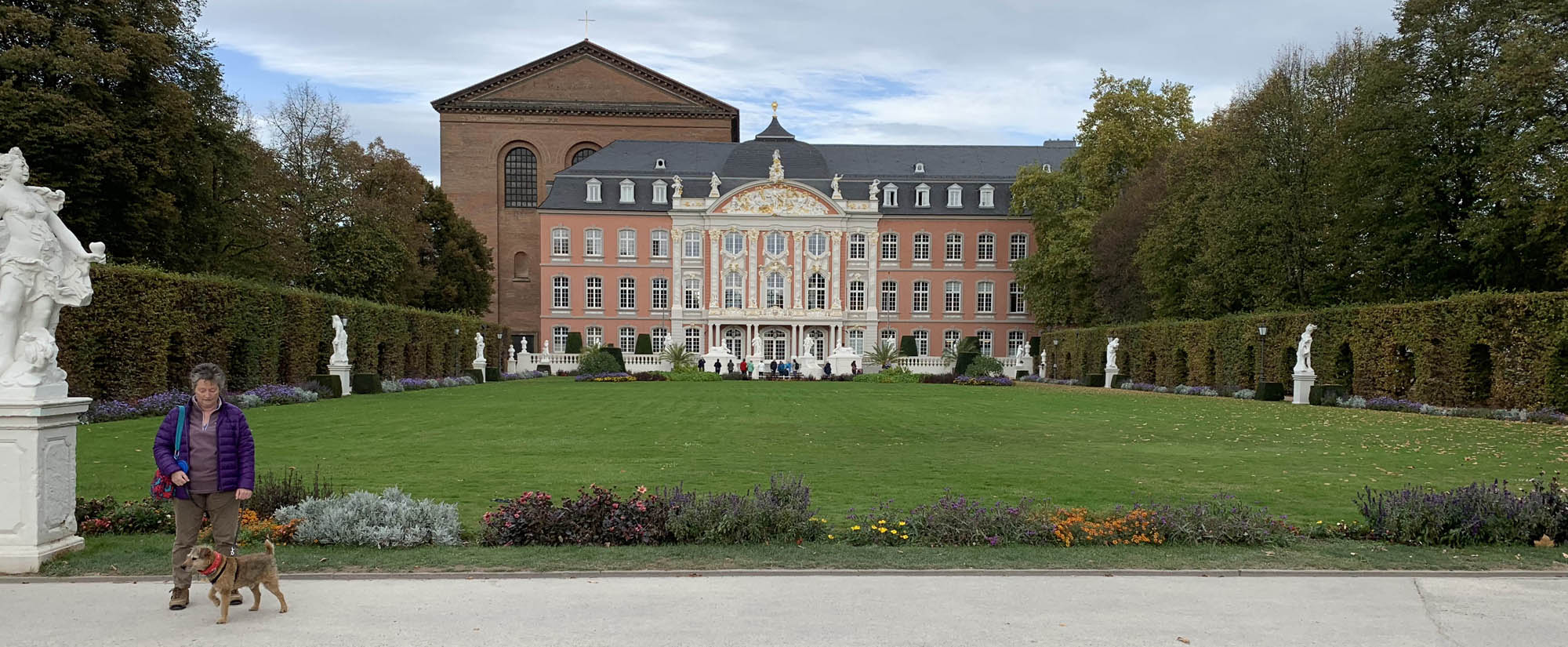
. . . to the Konstantin Basilika [Imperial Throne Room].

The Basilika was originally built about AD 310 as the Aula Palatina or audience hall of the Roman Imperial Residence of Constantine the Great. Modified many times since Rome fell, it has subsequently been used by the Frankish counts of this district and then by local archbishops. Latterly it was restored to its original size and has been a Protestant Church since 1856. It was burnt out in 1944 during WWII but it was rededicated as a place of worship in 1956. We alternated going inside with staying outside in the comparative cold with Ralf so we both could have spent longer in this extraordinary building which has fulfilled many varied functions and survived for so long.
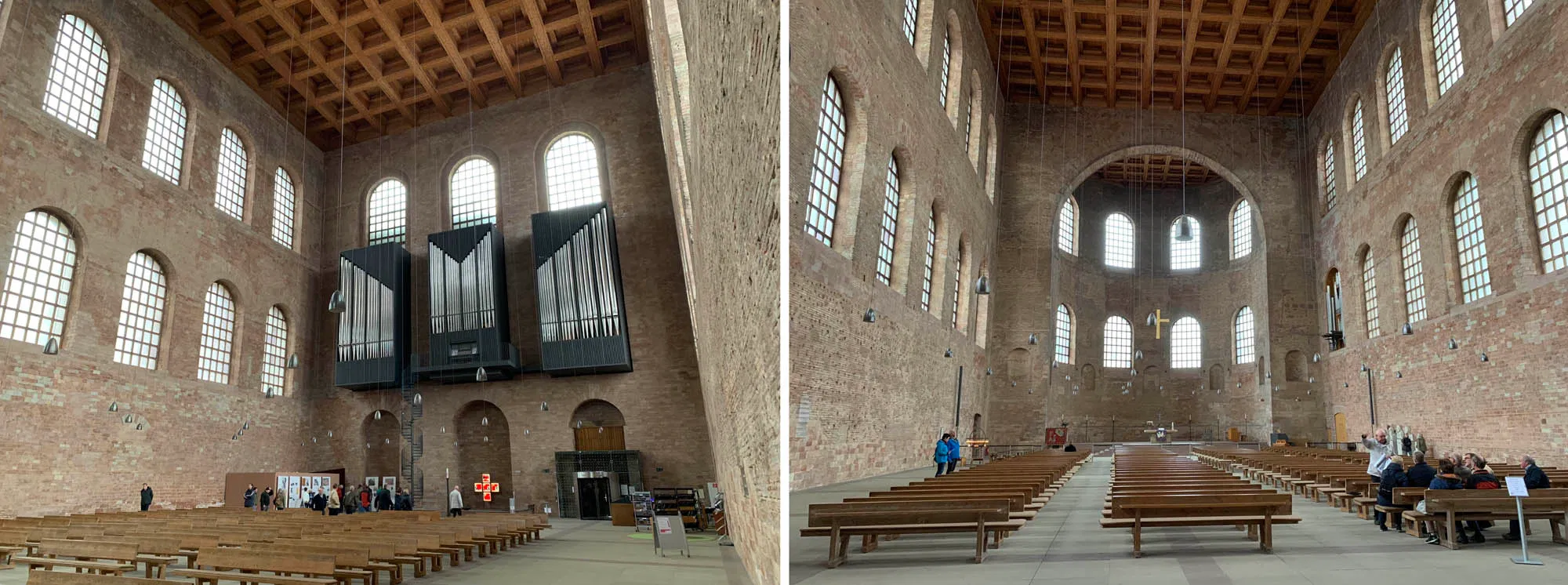
This is an impressive space indeed. The interior is immense and spartan with bare brick walls and no decoration. Originally intended, no doubt, to make anyone entering the presence of the Roman ruler feel insignificant, at 27 meters wide, 67 meters long and 33 meters high it is the largest surviving single room structure from ancient times and it does just that. It is also very cleverly constructed so that the windows and the niches below become progressively wider, creating an illusion of greater depth.
The surrounding streets are full of character and it is just a short walk to the Dom [Trier Cathedral].

Unusually, this has six towers and is a place of pilgrimage as it includes the Sanctuary of Christ’s Seamless Robe.

Matilda was particularly taken by the ceiling in blue and white relief, like a Wedgwood bowl.
Cathedral Square includes Trier Cathedral and the Church of Our Lady which are both World Heritage Sites. The Hauptmarkt is said to be one of the finest old squares in Germany and features the market cross from AD 958 and a sixteenth century fountain.
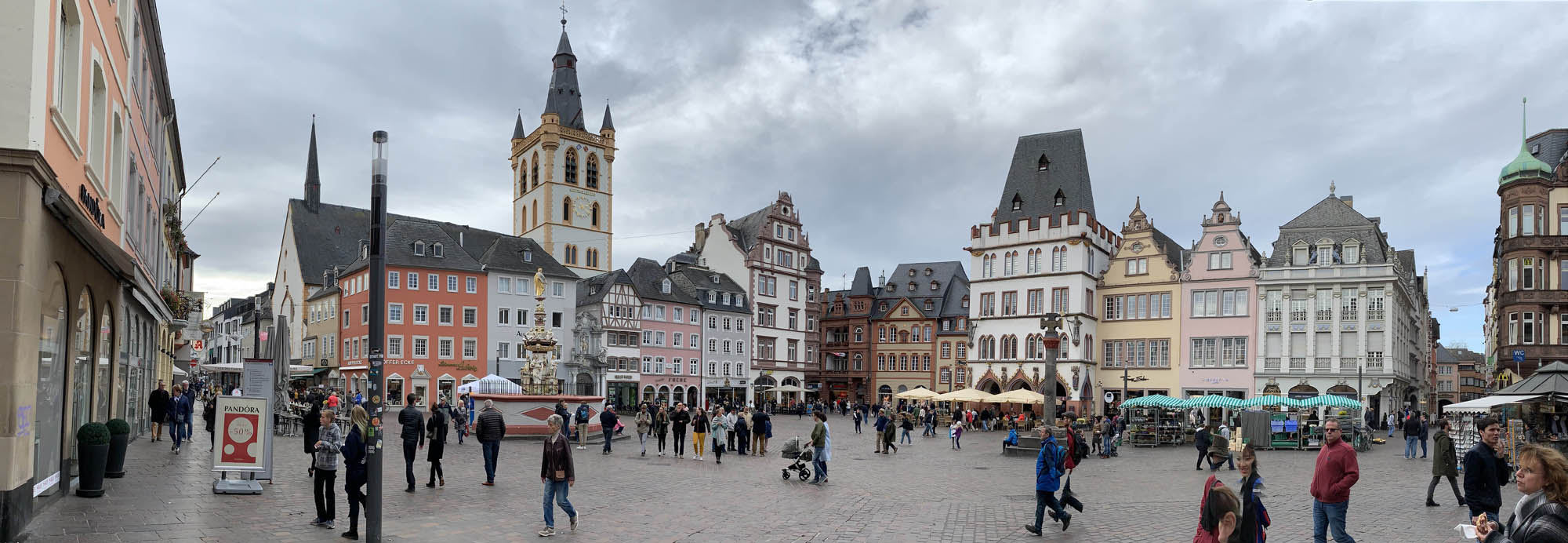
The building named the Steipe, after the pillars supporting the arcade, is now home to a bar. So, of course, we allowed Ralf to rest his little legs while we had a restorative beer, looking out over the Hauptmarkt.

The Porta Nigra is, as the name suggests, a gateway, and is the largest Roman edifice in Germany. The stones are fitted together with iron crampons holding them in place instead of mortar. We did not go in as Ralf is not proficient on stairs.

Karl Marx’s birthplace, adjacent to the Porta Nigra, has been turned into a museum, including a first edition of the Communist Manifesto. This may not be an added incentive for Robert to return but we agreed that we would like to come back to Trier and spend more time visiting some of these extraordinary monuments.
On the way back to Alan we dropped in to the bar nearby and had the last draught beer of the aire‘s season – the barrel ran out and it will be bottles only from now on.
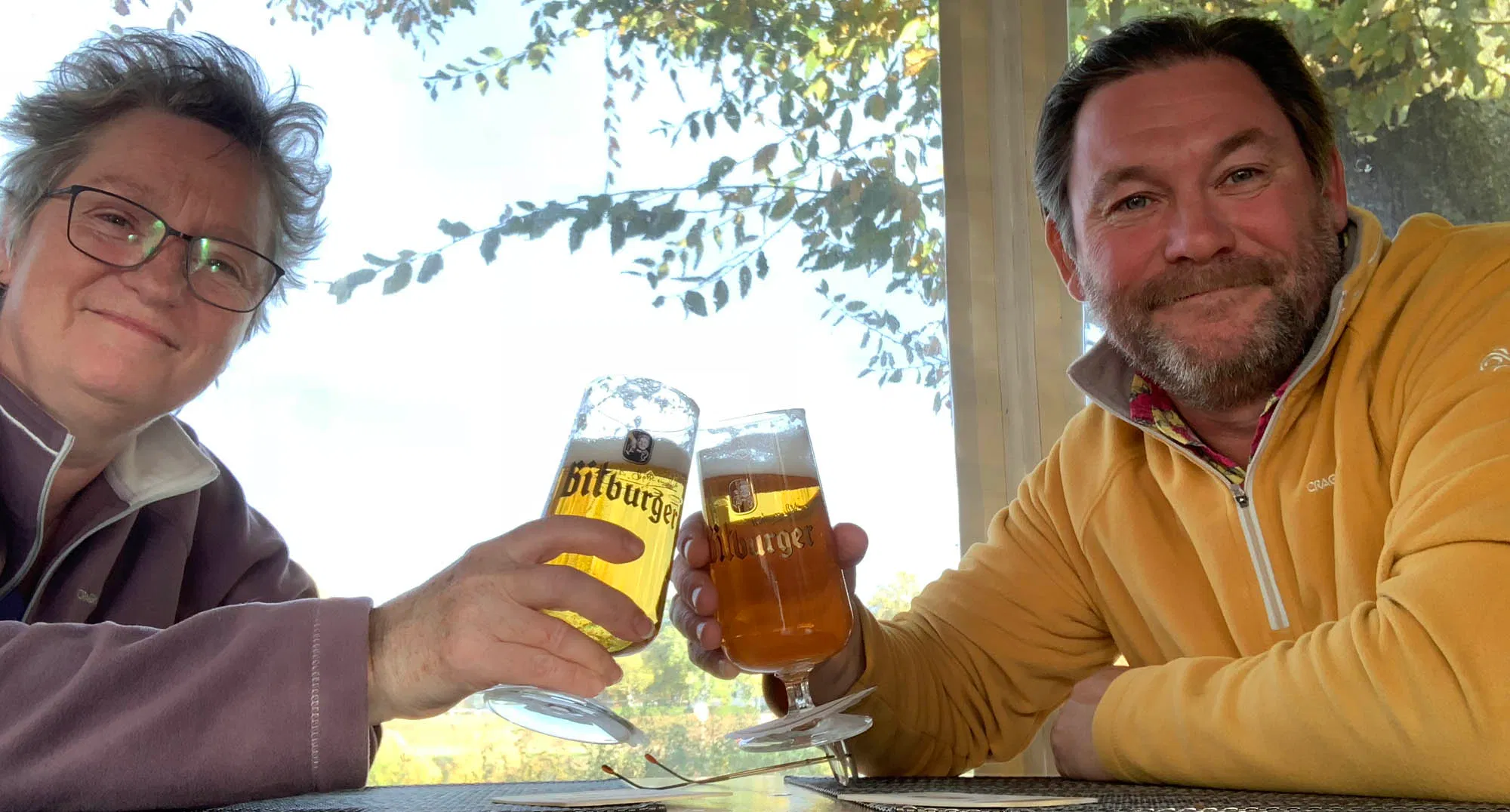
Walked today: 6.4 miles
Driving distance today: 53.31 miles
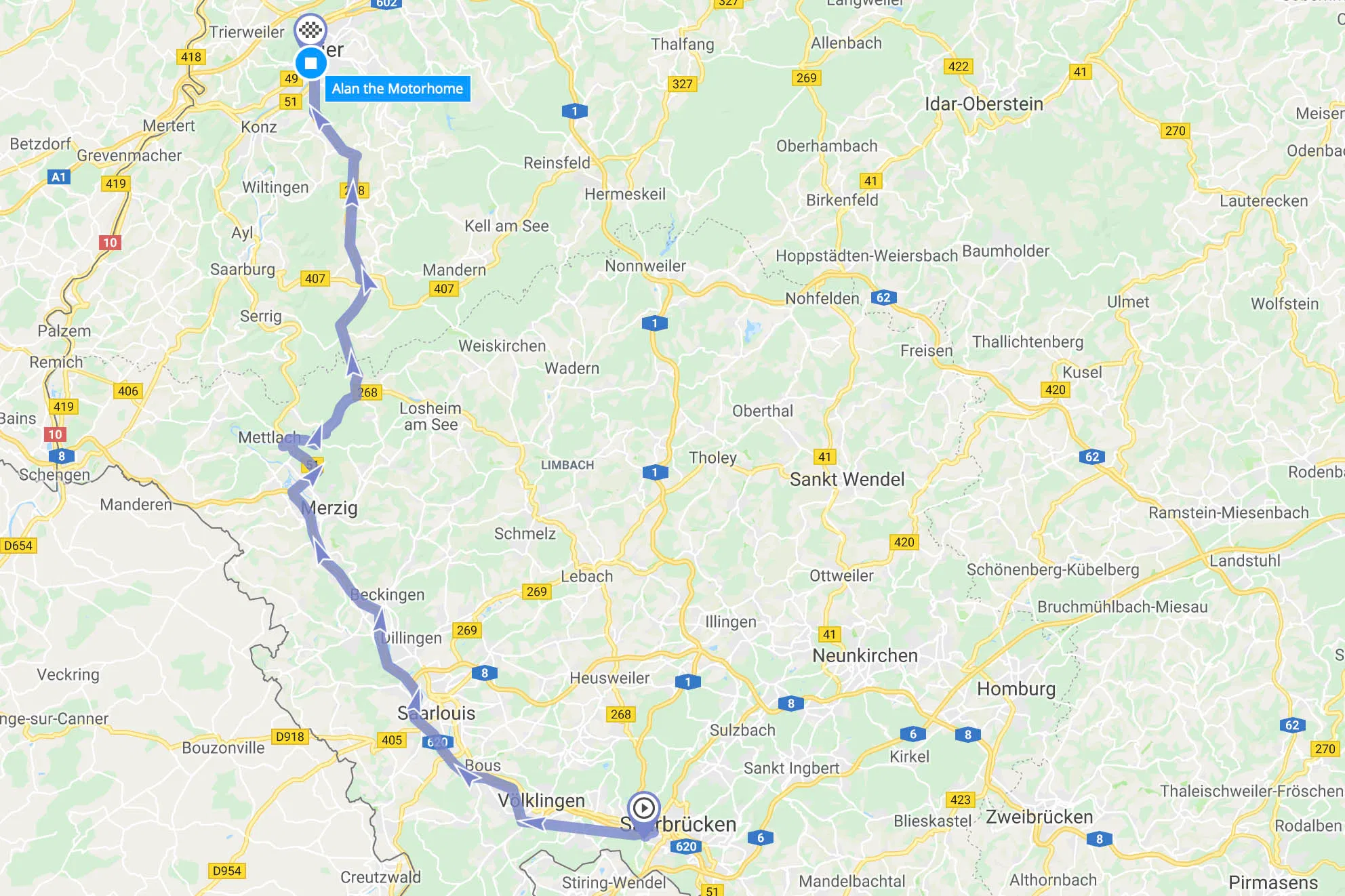
The current tour map:

Overnight location: n49º74.1636′ e6º62.4788′
Reisemobilpark Treviris:
